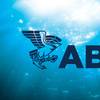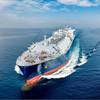Wärtsilä NSD Address Sulzer RTA84T Bedplate Fears
Following is an excerpt from the announcement. CURRENT SITUATION: There are today 41 of the RTA84T and RTA84T-B engine types in service, all in VLCCs. The first began operation in 1994, and the longest running engines have individually accumulated up to more than 40,000 running hours. Of these, 11 engines have cracks in one or more of their bearing girders. The bearing girders are arranged transversely in the engine bedplate and carry the main bearings in which the crankshaft runs. The cracks are all in the circumferential direction beneath the bearing housings.
These cracks were detected in six RTA84T and five RTA84T-B engines, with the first cases being reported in November 1999. Ten of these affected engines were manufactured under license by Hanjung (KHIC) and one by Hyundai Heavy Industries Ltd. Several of the other engines of these types in service, including engines delivered by the two above-mentioned licensees, were carefully checked by the engine builders and Wärtsilä NSD but no cracks were found.
Although various numbers of affected engines have been reported, there are only 11 engines with cracks. However, the affected ships have sister ships with engines having no cracks which might explain the discrepancies. No unscheduled engine stop has occurred as of today (August 29), and all affected vessels remain in service. However, three ships are sailing at a reduced speed, purely on the recommendation of Wärtsilä NSD as a precautionary measure.
Investigations by Wärtsilä NSD, licensees and shipbuilders concerned, in close collaboration with the classification societies and independent technical experts are ongoing but, so far, no definite conclusion can be made from these investigations.
Actual stress measurements, carried out on engines on test beds as well as on board ships, are much in line with the calculated design values. Safety factors have been verified as being according to the DIN standard, taking into account the material used and the usual deficiencies in cast steel. For obvious reasons the necessary metallurgical analyses cannot be done while the engines are still in operation, as such investigation requires cutting out samples from the cracked girders.
REPAIRS: Wärtsilä NSD and the licensees concerned have developed appropriate repair procedures with instructions and tools. Two remedies have been developed, involving the weld repair of cracks and replacement of bearing girders, both being made in situ. However, a complete change of bedplate appears to be preferred by most of the shipowners concerned. The repairs can start as early as the ships and new bedplates become available. The time required for repair is expected to be about two months, and will in most cases be combined with normal drydocking of the ships concerned.
Meanwhile, the engines are safe to operate as most of the existing cracks are stable and not propagating, or in a few cases only propagating very slowly. The existing cracks are carefully monitored and unaffected girders are regularly checked for cracks.
The first three RTA84T engines built had bearing girders with a web thickness of 60 mm. None of these engines has developed cracks in the bedplate girders. Because of the moderate stress level measured on the first engine produced, the girder design was modified to 'type b' design having a web thickness of 50 mm for production reasons. Both the calculated and the measured stresses and strains in this 'type b' girder were all checked again by calculations and by measurements on board ship and on the test bed, and safety margins were verified to be within normal practice and Wärtsilä NSD's expectations.
FUTURE ENGINES: For future new engines, in order to restore confidence in view of the on-going newbuilding projects, a new bearing girder design has been introduced. This modified girder design has a thickness of 60 mm to increase the tolerance for material deficiencies, and an extra manufacturing specification regarding casting risers. In addition, it has been agreed with licensees to exert a stricter quality assurance procedure and to adopt an improved quality and test specification. These measures will together give a 100 per cent guarantee that all potentially critical material deficiencies will be detected and remedied.










